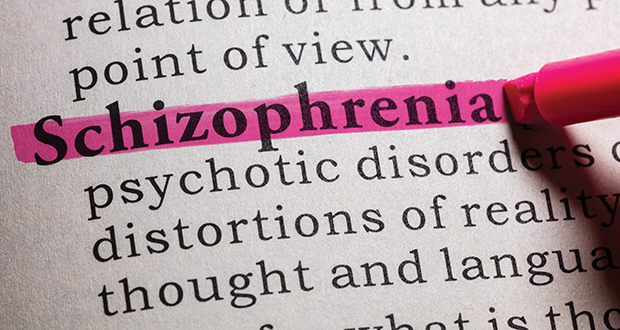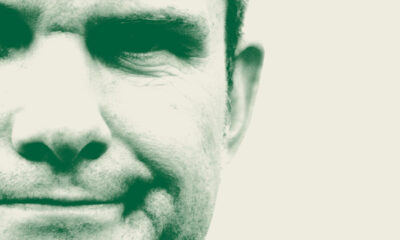Mental Health
Unmet needs in treatment of schizophrenia’s negative symptoms – Part 2

In the final of two articles about the negative symptoms of schizophrenia, Consultant Psychiatrist Dr Stephen McWilliams discusses at length the various treatment options and the challenges to look out for
In last month’s Irish Medical Times, we examined paranoid schizophrenia with particular reference to negative symptoms as described by Nancy Andreasen. These include affective flattening or blunting, alogia (poverty of speech), avolition-apathy, anhedonia-asociality and difficulties with attention. Such symptoms present a real challenge in the management of schizophrenia as they may persist long after the positive symptoms (hallucinations, delusions and so forth) have been ameliorated. Indeed, they are responsible for much of the poor functional outcome and poor quality of life that occur in patients with schizophrenia.
Broadly, there is a distinction between primary negative symptoms and secondary negative symptoms.1 The former represent an enduring deficit state that tends to be stable over time and predicts a poor prognosis. They can be further subdivided into premorbid negative symptoms, psychotic-phase non-enduring negative symptoms, and deteriorative negative symptoms.
Meanwhile, secondary negative symptoms are the consequence of positive symptoms, depressive symptoms, adverse effects of antipsychotic medication (especially bradykinesia and other forms of Parkinsonism), high-dose antipsychotic medication, chronic substance misuse, social deprivation, and lack of stimulation. Secondary negative symptoms are best treated by addressing the underlying cause. However, approximately three out of every four people with established schizophrenia will have some form of negative symptomatology, while 20 per cent will have persistent primary negative symptoms.
It is worth noting an observation that patients with schizophrenia who misuse psychoactive substances tend to experience fewer negative symptoms than those who abstain. However, it is likely that this is partly because patients who develop psychosis in the context of substance misuse (especially cannabis) have fewer neurodevelopmental risk factors and hence better baseline cognitive and social function than those who develop psychosis without substances.
Early intervention programmes
So, how should the negative symptoms of schizophrenia be addressed? Firstly, there is ample evidence that the longer the duration of untreated psychosis (DUP) the worse the recovery in terms of social, vocational, and functional outcome, and also quality of life. Early intervention programmes to identify and treat individuals with evolving psychosis are therefore essential in preventing the functional disability associated with negative symptoms. Examples of such initiatives include Orygen in Australia, TIPS in Norway and DETECT and RISE in Ireland. Indeed, the Health Service Executive (HSE) recently published its National Clinical Programme for Early Intervention in Psychosis.2
Clinical practice guidelines
In general terms, several sets of clinical practice guidelines (CPGs) exist in relation to the management of schizophrenia. These include those of the British Association for Psychopharmacology (BAP), the South London and Maudsley NHS Trust, the Scottish Intercollegiate Guidelines Network (SIGN), the schizophrenia Patient Outcomes Research Team (PORT) and others.
The National Institute for Health and Care Excellence (NICE) published their updated guidelines in February 2014, and placed an emphasis on more recovery-orientated language, comprehensive multidisciplinary assessment, early intervention, care planning, a collaborative approach to prescribing, physical health monitoring, and phase-specific interventions such as carer information and support, cognitive behavioural therapy (CBT) and vocational rehabilitation. Clearly, therefore, the authors had negative symptoms and functional outcome in mind during their revisions.
But which CPGs are the best? This was the question posed by Keating and colleagues in a recent study published in the BMJ Open.3 The Appraisal of Guidelines for Research and Evaluation II (AGREE II) instrument was used to compare CPGs in terms of quality and applicability to first-episode schizophrenia. Some 3,300 records were screened to find 10 CPGs that met the inclusion criteria. Recommendations varied in terms of the choice of antipsychotic, however side effects (rather than efficacy) were usually deemed to be the key consideration.
While maintenance of remission using antipsychotics was universally recommended, CPGs generally identified a paucity of evidence to guide the duration of maintenance treatment. The guidelines that scored best overall (using AGREE II) were the SIGN and NICE guidelines, and the Clinical Practice Guidelines for Schizophrenia and Incipient Psychotic Disorder published by the Spanish Ministry of Health and Consumer Affairs.
Antipsychotic medication
The Maudsley Prescribing Guidelines in Psychiatry (13th Edition) highlight the fact that medication has been shown to improve negative symptoms but that this may be limited to secondary negative symptoms in acute episodes of psychosis.1
Moreover, there seems to be little evidence favouring one antipsychotic over another. Broadly speaking, antipsychotic medication is divided into first- and second-generation categories (they used to be termed classical and atypical neuroleptics, respectively).
First-generation antipsychotics (FGAs) have been available since the early 1950s and include haloperidol, chlorpromazine and zuclopenthixol. Potential side effects include sedation, extrapyramidal symptoms (such as dystonia, Parkinsonism, akathisia, and tardive dyskinesia), raised prolactin and QTc prolongation.
They are considered effective in the treatment of hallucinations, delusions and thought disorder, but have traditionally been considered less so for negative symptoms or functional outcome. Indeed, their success in treating positive symptoms (which more easily garner our attention) may have distracted from their limited ability to address negative symptoms (which often go unnoticed).
Second-generation antipsychotics
In the 1970s, clozapine was heralded as the first of the second-generation antipsychotics (SGAs). To this day, it is unrivalled in terms of efficacy, although initial claims about its usefulness in treating negative symptoms may have been overstated. Its side effects include a potentially fatal agranulocytosis; however, a vigilant clozapine patient monitoring service has allowed for clozapine’s ongoing use for treatment-resistant schizophrenia. Other side effects include hypersalivation, sedation, weight gain, polyuria and an increased risk of cardiomyopathy and seizures.
Since the early 1990s, newer SGAs have become available, including olanzapine, risperidone, amisulpiride, quetiapine, aripiprazole, ziprasidone, and others.
According to both Stefan Leucht and The Maudsley Prescribing Guidelines, there is no consistent evidence that SGAs are superior to FGAs in the treatment of negative symptoms.1,4 But the guidelines also refer to some data suggesting efficacy for negative symptoms with antipsychotics such as amisulpiride, cariprazine and aripiprazole. Clozapine’s efficacy remains uncertain, with a significant confounder evident in its low propensity to cause extrapyramidal side effects, particularly bradykinesia, which can be hard to distinguish from negative symptoms from a phenomenological perspective.
Apart from antipsychotics, are there any other medications that might be useful in tackling negative symptoms? According to the Maudsley Prescribing Guidelines, various medications that modulate glutamate pathways have yielded relatively poor results to date, while trials of others that modulate N-methyl-D-aspartate (NMDA) receptors – glycine, D-serine, modafinil, armodafinil and so forth – have also proved disappointing. Evidence regarding pregnenolone, memantine and lamotrigine (to augment clozapine) is thus far unconvincing.
There may be a small hope regarding the antibiotic minocycline in relation to its neuroprotective effects and its modulation of glutamate neurotransmission, but the evidence is far from conclusive. Finally, in terms of antidepressants, there may be some modest evidence in relation to mirtazapine, mianserin and the noradrenaline reuptake inhibitor topiramate.
Medication challenges
When it comes to medication, engagement is certainly the first challenge. There is ample scientific evidence to guide the advice offered by the doctor, but it is equally important that the patient retains a clear sense of autonomy. Wherever possible, the choice of medication should be a collaborative process with the patient at the centre and taking carers’ views into account if consent is given.
While every patient is unique, the aim is to use medication algorithmically in line with one of the CPGs, titrating to the minimum effective dose, adjusting according to response and tolerability, and assessing over four to six weeks.
Long-acting injections remain an option, while most guidelines suggest that clozapine should be considered where patients are unresponsive to two different antipsychotics, at least one of which is second-generation.
Bear in mind that failure to respond to any medication may be explained by inadequate dosage, nonadherence, misdiagnosis, or substance misuse.
Psychosocial treatments
And what about the psychosocial treatments for schizophrenia? Avoidance of illicit substances (such as cannabis) is essential and, where indicated, appropriate addiction services should be offered. Further to this, approaches with negative symptoms in mind may involve social skills training, vocational rehabilitation, and various forms of psychotherapy.
The principles of psychosocial interventions involve the setting of realistic goals, the maintenance of active treatment in the context of a protracted illness, and the provision of a supportive environment.
In particular, numerous studies show that CBT yields both symptomatic and functional improvement.
The purpose of social skills training is to help the patient to correctly perceive and respond to social situations with particular attention paid to day-to-day living skills, communication, conflict resolution, vocational skills and so forth. Benefits may include enhanced social adjustment, reduced hospitalisation rates and improved social adjustment, although the overall improvement in core symptoms may have its limitations.
Relapse
Psychoeducation for carers and family members also has a strong evidence base. Some time has passed since Brown and colleagues originally theorised on expressed emotion in the domestic setting, describing how high levels of hostility, critical comments and emotional overinvolvement can increase the likelihood of relapse.
Subsequently, numerous studies have highlighted the importance of providing accessible information and support for carers and families.
Similarly, occupational therapy and vocational rehabilitation initiatives such as Reach and the National Learning Network play an important role in recovery.
Relapse prevention strategies are also incorporated into the Wellness and Recovery Action Plan (WRAP) groups run in locations across the country, while organisations such as Shine (formerly Schizophrenia Ireland) and the Hearing Voices Network offer a range of supports.
Of note, the HSE recently launched its Advancing Recovery Ireland (ARI) strategy, aimed at improving supports to promote recovery in mental health.
True recovery and unmet needs
So, is true recovery possible? Ashok Malla and colleagues (in Canada) tell us that the right approach to first-episode psychosis can result in 70 per cent and 80 per cent of individuals returning to work by the end of years one and two, respectively.5
Lally and colleagues also examined recovery from first-episode psychosis in their meta-analysis.6
They pooled data from 79 studies and found that remission and recovery rates were 58 per cent and 38 per cent, respectively over the follow-up periods and thus more favourable than previously thought.
With all this in mind, the unmet needs in the treatment of negative symptoms of schizophrenia are manifold.
Early diagnosis for the reduction of DUP is crucial but often not achieved. Pharmacological interventions work far better for positive symptoms, a fact that sometimes masks the absence of true recovery.
Side effects are a significant issue, especially where they contribute to secondary negative symptoms. And access to phase-specific psychosocial interventions can be limited or absent for large numbers of patients.
In the end, collaborative and recovery-focussed treatment that is in line with international best practice will provide individuals with the realistic hope of an enjoyable, useful, and fulfilling life. But there is still much work to do. ![]()
Author
Dr Stephen McWilliams is a consultant psychiatrist, author and Associate Clinical Professor, School of Medicine and Medical Sciences, University College Dublin. He runs the Psychosis Programme at Saint John of God Hospital, Dublin.
References
- Taylor D, Barnes T, Young A. The Maudsley Prescribing Guidelines in Psychiatry (13th Ed). Wiley-Blackwell (pages 31-35).
- Health Service Executive (June 2019). National Clinical Programme for Early Intervention in Psychosis. Model of Care. ISBN 978-1-78602-128-1. (See also Executive Summary. ISBN 978-78602-129-8).
- Keating D, McWilliams S, Schneider I, Hynes C, Cousins G, Strawbridge J, Clarke M. Pharmacological guidelines for schizophrenia: a systematic review and comparison of recommendations for the first episode. BMJ Open 7: e013881. doi:10.1136/bmjopen-2016-013881.
- Leucht S, Corves C, Arbter D, Engel RR, Li C, Davis JM. Second-generation versus first-generation antipsychotic drugs for schizophrenia: a meta-analysis. Lancet (2009). 373:31-41.
- Malla A, Norman R, Schmitz N, Manchanda R, Béchard-Evans L, Takhar J, Haricharan R. Predictors of rate and time to remission in first-episode psychosis: a two-year outcome study. Psychol Med (2006). 36(5):649-58.
- Lally J, Ajnakina O, Stubbs B, Cullinane M, Murphy KC, Gaughran F, Murray RM. Remission and recovery from first-episode psychosis in adults: systematic review and meta-analysis of long-term outcome studies. British Journal of Psychiatry (2017). 211(6):350-8.
-

 Destination8 months ago
Destination8 months agoSingapore Airlines CEO set to join board of Air India, BA News, BA
-

 Breaking News9 months ago
Breaking News9 months agoCroatia to reintroduce compulsory military draft as regional tensions soar
-

 Tech News11 months ago
Tech News11 months agoBangladeshi police agents accused of selling citizens’ personal information on Telegram
-

 Breaking News9 months ago
Breaking News9 months agoBangladesh crisis: Refaat Ahmed sworn in as Bangladesh’s new chief justice
-

 Productivity11 months ago
Productivity11 months agoHow Your Contact Center Can Become A Customer Engagement Center
-

 Toys11 months ago
Toys11 months ago15 of the Best Trike & Tricycles Mums Recommend
-

 Guides & Tips9 months ago
Guides & Tips9 months agoHave Unlimited Korean Food at MANY Unlimited Topokki!
-

 Gadgets3 months ago
Gadgets3 months agoSupernatural Season 16 Revival News, Cast, Plot and Release Date
























